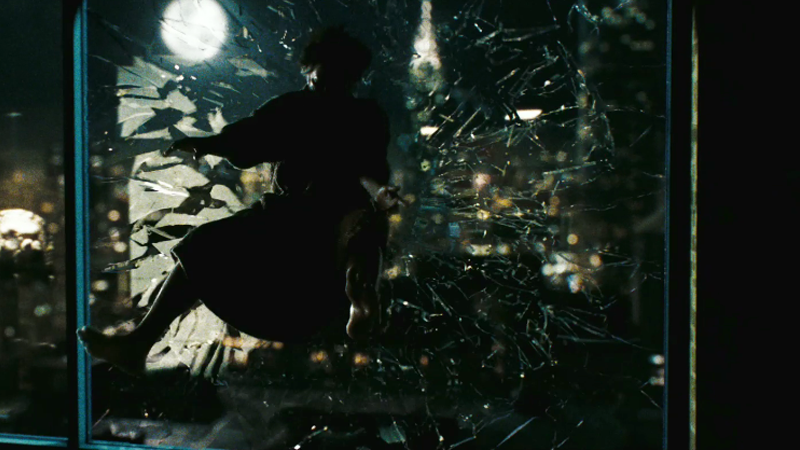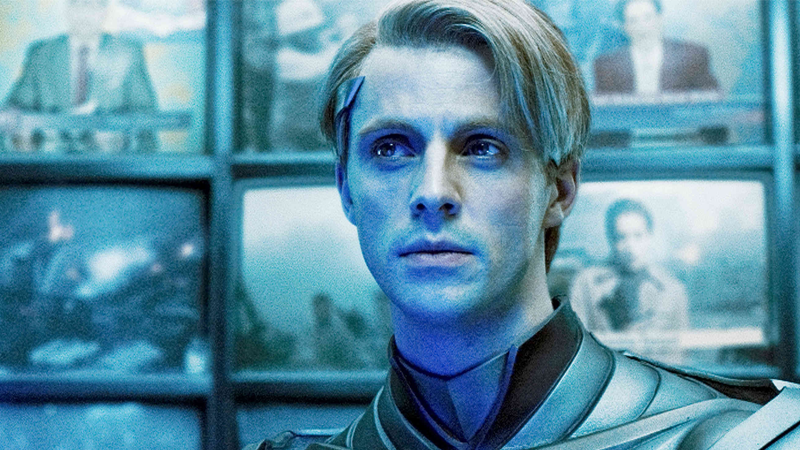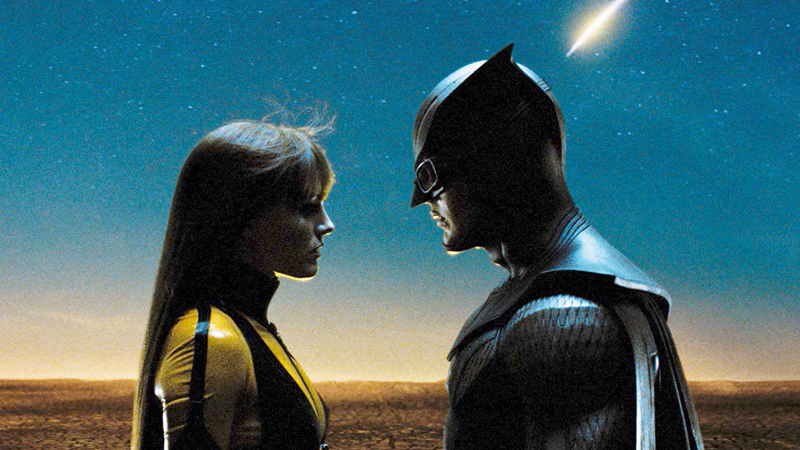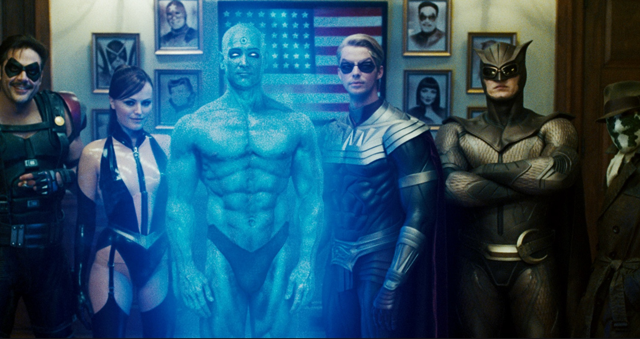Seven years ago before he became the face of DC’s cinematic universe, Zack Snyder adapted one of DC’s most famous graphic novels, Watchmen. And critical reaction was divided. All these years later, however, the movie holds up for me, for one simple reason: It’s incredibly gorgeous.
I rewatched Watchmen recently, in the run-up to the release of Batman v Superman. And I was surprised to see how vastly different this film actually was from anything Snyder is offering in his latest superhero film. Sure, Batman v Superman‘s tone and general aesthetic are rooted in the director’s love of The Dark Knight Returns, but while BvS nods to a few shots and moments here and there, it doesn’t go whole hog in recreating the look of the comic. And meanwhile, Watchmen goes to extreme lengths to capture the look of Dave Gibbons’ artwork from the original graphic novel.

The Comedian’s body smashing out of his apartment window. The smiley-faced button and its blood spatter, artfully balanced on the grating of a drain. The sequences on Mars with Doctor Manhattan and Silk Spectre, or the trippy “atom bomb” sequence, where Laurie and Dan are blown into atoms in the midst of a kiss. In every little detail, Snyder recreates Gibbons’ iconic panels from the comics, and re-renders them on the big screen — save for, sadly, John Higgins’ bold colour work. After all, in 2009, the wider world had yet to fully embrace the notion of a “serious” comic book movie that wasn’t as visually as dark as its subtext.
But this complete and utter devotion to the look of the graphic novel is what makes Watchmen such a fascinating film to watch, even today. Snyder doesn’t just frame his shots to pay homage to set ups and visuals from the comics, his camera lingers. A love of slow-motion (that would blossom in his later films) frames iconic imagery from the comics as if it’s a living painting, a celebration of Watchmen as a comic, as a visual entity. For years, Watchmen was deemed unfilmable, because of its length as well as its complex characterisation and storytelling. Snyder made it work, with his painstaking dedication to capturing each visually outstanding moment from the comics. Snyder’s adoration for the source material, for how it leapt off the page, is unabashed, and even in its epic length, this film is a delight to watch.

That isn’t to say that Watchmen is without flaws, however. Arguably, the movie sows the seeds for the critiques that would blossom with both Man of Steel and Batman v Superman. For all the earnest, reverent visual spectacle that Snyder’s trademark direction provides, David Hayter and Alex Tse’s screenplay buckles under the attempt to adapt the dense material of Moore and Gibbon’s original graphic novel into a single movie, and fails to understand the true depth of the original work. Instead of offering up the same level of genre-subverting philosophy that Alan Moore did in the 1980s, Watchmen simply skims those ideas, reheats them and then offers them up to its audience, expecting us to be satisfied with a half-cooked result.
The exquisite detail Snyder’s visuals that relish so much gives way to characters who are painted in the broadest strokes — characters who, while managing to incorporate the basic beats of their comic counterparts, never really dive into the depths and layers of the originals. As a graphic novel, Watchmen defined a generation of comics, and its influence is still felt today. The movie comes barely close to that level of depth textually, relying on its reverence for the Watchmen aesthetic for its greatest moments.

A lot of Watchmen‘s appeal, to this day, still remains skin deep — and while that might gall the most diehard fans of the graphic novel, this makes the movie fascinating to go back and watch — especially when you delve into the Ultimate Cut of the film, which re-integrated the animated short movie The Tales of the Black Freighter, an interlude from the original comics, into the full film. In a world where we’re now so used to seeing superheroes running around on the big screen doing impossible things, Watchmen still stands out for its ability to transform so many specific, vivid images from the original comic into real life.
It’s a literal comic book comic book come alive, successfully recreating an aesthetic quite unlike any other superhero movie out there. We’ve had fantastic adaptations of comic book characters since — but very few have captured the visual aesthetic of the comic books they’re directly inspired by so perfectly, the framing of it and the stylisation (arguably even now, Watchmen and Sin City stand as the two most successful comic book movies to do this).
Watchmen thoroughly embraces its roots in the comic book world, treating every frame of Dave Gibbon’s artwork as sacrosanct — and even when it falters, even when it changes elements for the sake of the movie’s flow or tone, it keeps its self rooted in that visual lexicon. It’s about as literal an adaptation of a comic book there’s ever been on the big screen, and to this day that’s something to be admired, even when it fumbles.
